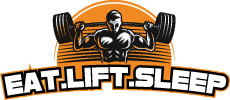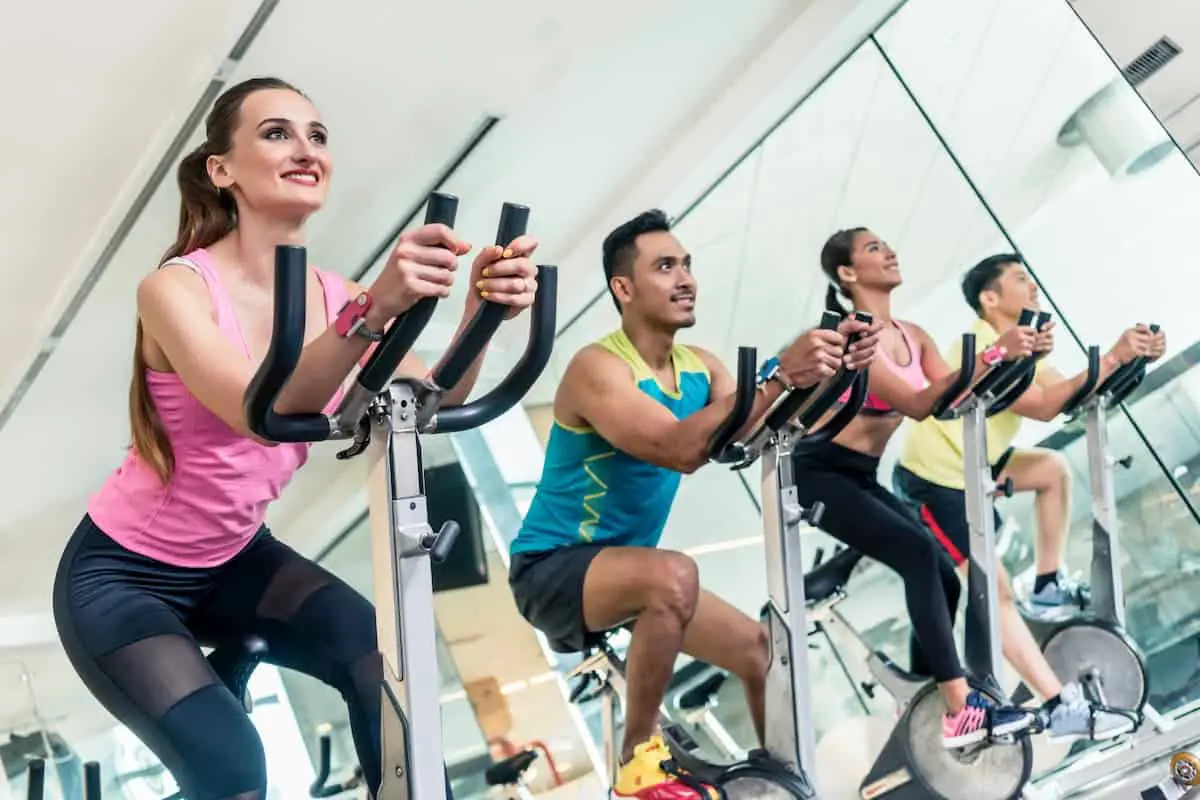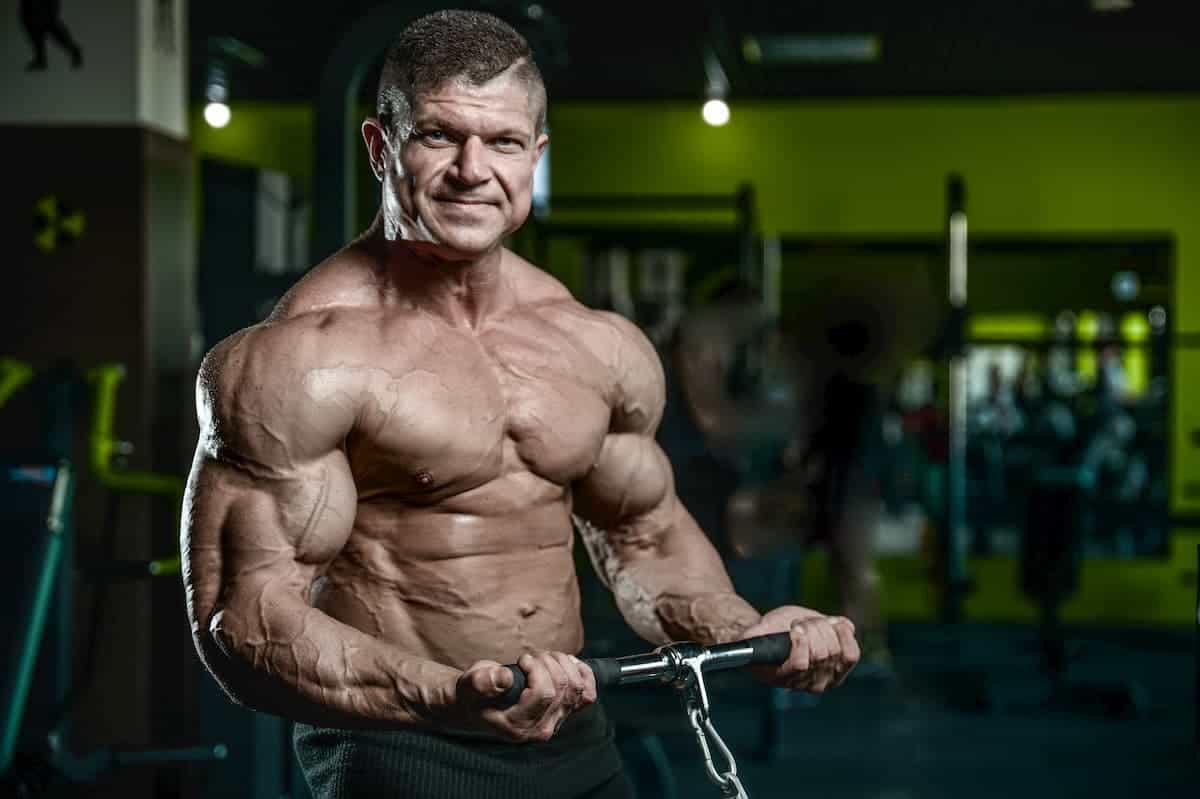You never want to stop learning how to better yourself and learning about fitness and the eleven core components of physical fitness.
Each of these can help you build and maintain a solid body for life, take some time and read up below and then search out more ways to become physically healthy and strong.
11 Core Components of Physical Fitness:
- Agility
- Balance
- Body Composition
- Cardiovascular Endurance
- Coordination
- Flexibility
- Muscular Endurance
- Muscular Strength
- Power
- Reaction Time
- Speed
Now that you know what the five core components are we can take some time and really dig in deeply to each one to help you better understand how and what roles they play.
When considering our overall health and what constitutes physical fitness, there are a lot of factors that go overlooked depending on what you personally decide to focus on with your own health or training.
If you are focused on a sport or a regime that prioritizes cardiovascular performance, then that is the measuring stick that will be used to determine fitness.
If you are a bodybuilder, it will be measured by muscular strength. A gymnast will value their balance and agility.
Whether or not you feel like you are lacking in one area or are just looking to understand how best to improve your health, it’s a good idea to examine the various components that comprise our overall physical fitness.
Although it may be easy to overlook, there are many more components than we think to our physical fitness and they all work in tandem to provide the ideal performance and health levels that we expect from our bodies.
Whether you consider one particular component more or less critical is usually irrelevant, as whether you focus on it or not, it will provide some benefit to our health.
In some cases, neglect of the wrong components will even be to the detriment of those that you are trying to focus on, making it a good idea to cover all of the possible bases of your fitness.
The 11 components that we will be looking at are agility, balance, body composition, cardiovascular endurance, coordination, flexibility, muscular endurance, muscular strength, power, reaction time, and speed.
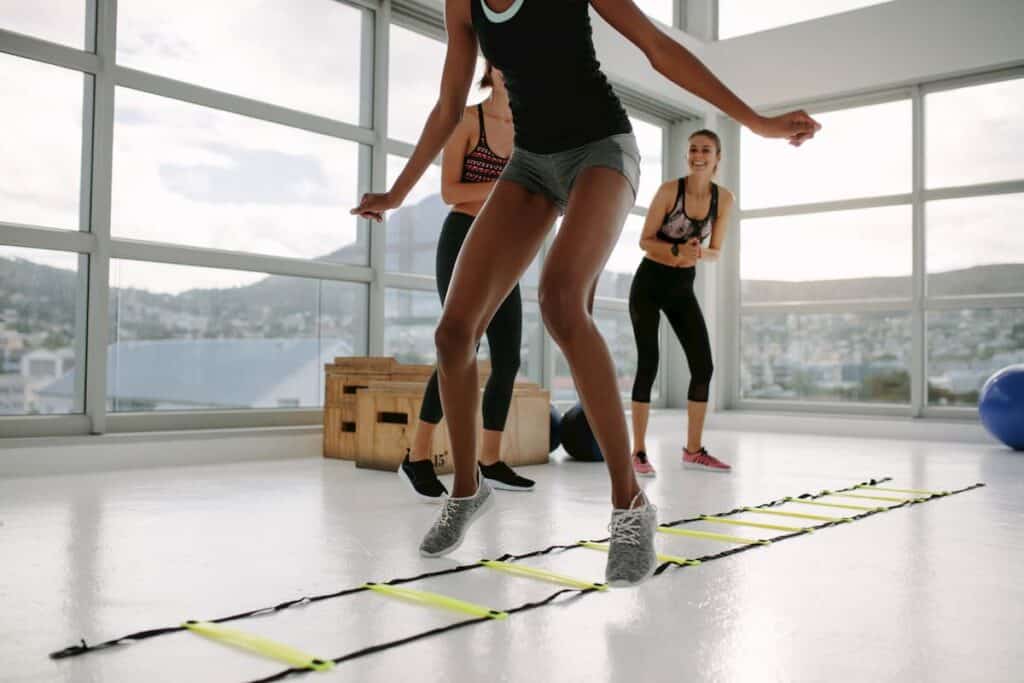
Agility
Agility can be somewhat of an umbrella term, taking into account a variety of different components that have yet to be discussed.
Fundamentally, however, agility is the measurement of the control someone has over sudden directional change.
Making dynamic stop-and-start movements is a good measurement of agility.
This is why you will often see agility training exercises that involve explosive rapid movements through a series of obstacles or complex patterns of footwork.
Due to all of this, agility is basically essential in almost every single sport or occupation that has a high fitness level requirement.
Agility is probably one of the best measurements of athleticism for this reason.
Since this particular component is so reliant upon other aspects of your fitness, you will be severely limited in your agility if you aren’t physically strong enough to perform the movements that the dramatic shifts in weight and momentum will demand from your body.
Maintenance of this kind of activity will also place an enormous demand on your stamina, as managing to keep up these kinds of movements for a long period of time will fatigue you extremely quickly.
You can see the importance of this physical component when you look at the tests that law enforcement agencies, for example, will give to officers.
Being able to distinguish yourself when testing your agility is one of the best measurements of your overall physical athleticism.

Balance
The measurement of how well you can maintain your equilibrium and stability. Balance is a part of your fitness in every single aspect of your life.
Even if all you are doing is walking from one end of the room to the other, your balance plays one of the biggest parts in the way that your body functions.
Much of this balance is the responsibility of the inner ear’s vestibular system.
The vestibular system is a complex series of canals inside the inner ear that we essentially use to balance ourselves through a sense of spatial orientation.
Without this component of our bodies, we would have enormous trouble performing even the simplest of movements, let alone anything complex like what is involved in any form of exercise or sports.
The other necessity in maintaining balance is your overall muscle strength.
Without the strength to support yourself in whatever motion or position you are attempting to maintain, you will be unable to maintain your balance.
Depending how extreme the movements you are attempting to make are, or how much extra weight you are carrying, balance will play an integral role in how well you perform the exercise or actions.
A lot of the time the strain on your muscles will be able to be reduced by having a good balance since you’ll be able to instinctively understand the best points to shift and balance your weight on.
Since a lot of your balance is about spatial awareness, there are other factors that can damage your balance.
Any injuries that cause neck or back pain can send signals to your brain that will confuse your ability to maintain your balance.
Visual impairments that get in the way of depth perception will also cause issues as you’ll have a harder time orientating yourself in your surroundings, damaging your ability to understand where your body should be to keep the best balance possible.
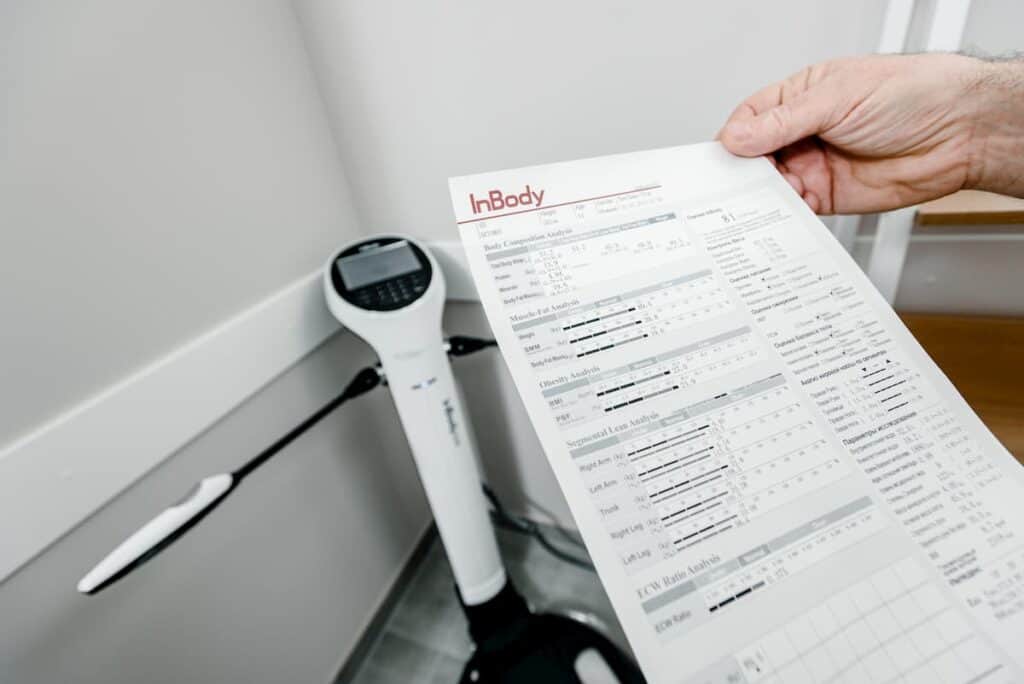
Body Composition
Probably one of the most well-known components on this list for its usage in determining overall health, and the one that is the easiest to visualize and understand is body composition.
Essentially, body composition is the physical mass of our bodies.
We can separate that mass into two easy-to-understand categories that help us determine our overall fitness level. The two categories that make up our mass are fat and non-fat.
Non-fat mass encompasses the parts of our bodies that are essential. All of our bones, organs and muscle.
It’s important to separate this from the fat, as when we are attempting to evaluate body composition, we need to take in to account the different sizes and shapes of every individual.
Just because two people weigh the same, doesn’t necessarily mean that they will have the same amount of non-fat mass, meaning that an incredibly healthy, muscular individual could be comparable in weight to somebody who was simply overweight.
The important thing about this body composition is that the fat and non-fat mass is balanced correctly.
Although too much fat in our body composition can be a bad thing, it is still important that we retain some levels of fats.
These fats in our body are used as reserves of energy and in the production and regulation of various hormones.
There’s a multitude of different tests to determine whether or not the body composition is at a healthy level, though due to the differences from person to person, it can be difficult to pin down the most accurate form of measurement.

Cardiovascular Endurance
Your cardiovascular endurance is undoubtedly the most important aspect of your overall fitness.
Cardiovascular endurance will be the bottleneck for every single exercise or sport that you participate in.
A measurement of how well heart and lungs are functioning, increasing your endurance is the improvement of how well your cardiovascular system functions.
This will not only be one of the strongest indicators of your fitness but your overall health in general, as your cardiovascular system is responsible for so much more than just fitness.
The cardiovascular system is responsible for transporting all manner of nutrients, chemicals and blood cells, making it one of the most valuable components of your entire body.
Other than the benefits for your immune system and recovery, the primary way that this system directly affects your fitness is that it increases the amount of oxygen your muscles will have available to them through increasing your maximal oxygen consumption.
Focusing on improving this is nearly always beneficial, as the stronger your heart is, the higher the ceiling will be on all physical activities that you choose to undertake.
It’s so fundamental that almost every exercise you choose will increase this in some way or another.
Of course, the exercises that will increase it the most are endurance exercises, that will all be put under the term “cardio.”
The most common, easiest to access exercise for improvement of this component is to simply go running or jogging.
More complicated exercise routines that are designed to be completed multiple times and using as many joints as possible will also do wonders for increasing your heart rate and therefore improving your cardiovascular endurance.
A sport such as a triathlon is a good example of the ultimate test for your cardiovascular endurance.
However, the number of people who successfully complete a triathlon in their lifetime is a tiny percentage of the overall population.
Seemingly, some people will have a far easier time in performing feats of endurance like this.
Whether or not it’s a case of genetics is still a debate among scientists, as there are some genes that are instrumental in giving boosts to endurance and stamina.
Although it’s hard to tell how large a part genetics will play in the overall cardiovascular endurance of the average person.
Coordination
Coordination is the art of synchronizing all of your muscles to work in perfect tandem.
Coordination will be important in every type of physical action that you attempt to take and is one of the cornerstones of improving your overall agility.
Coordination, due to it’s role in managing the way your muscles work together, will be one of the most critical factors in determining how efficiently you can perform specific sets of complex actions in sports.
A lot of these complicated coordinated actions will involve more than just your physical fitness, but your mental fitness as well, making it a doubly important component in your fitness.
When taking coordination in to consideration, the main focus will likely be on hand-eye co-ordination, which will require focus and mental acuity.
Although it may seem like coordination is not something that is easily trained, you can certainly train your hand-eye co-ordination and reinforcing those neural pathways will help you in other coordination exercises that you may be performing.
Another example of the interaction your coordination will have with your overall agility, your balance will help to improve coordination as it interacts with your understanding of where and how you are positioning your body.
Coordination in combination with balance will also help you to avoid suffering from any injuries during your workouts or sports, as the enhanced state of awareness will ensure that you do not put yourself into physically compromising positions or situations.
Flexibility
Another one that comes underneath the agility umbrella, flexibility measures the range of motion that your joints will have access to.
Understandably, a good example of a type of sport that will have the highest demand on your flexibility would be gymnastics.
Although your joints are the first thing that comes to mind when considering flexibility, it should be noted that practices such as yoga will make great utilization of another kind of flexibility, the flexibility of ligaments and tendons.
Flexibility of ligaments and tendons is one of the prime reasons that you will often be told to “warm up” before doing heavy exercise or engaging in sports.
Not possessing enough flexibility in any of these categories, combined with the muscles not being warmed up, are what leads to tears in the muscles and damaging your joints.
It’s so important to focus on this point in particular, because without flexibility you will be exposing your joints and ligaments to painful stretching and unnecessary tension that will cause long term damage and possibly not only reduce the lifespan of your limbs but also cause you degenerative issues later in life.
Keeping fit and flexible and regularly exercising this component of your physical fitness has even been shown to help with problems such as arthritis.
The best way to improve this component is to perform regular stretching exercises, after warming up, both before and after you have engaged in physical activity.
The more often you do this, the more flexibility you will open up in both the range of motion that your joints have and the extent to which you can stretch your muscles into a variety of dynamic situations.
One pitfall to avoid here is overstretching or overusing muscles that are compensating for stiff joints.
An example of a common offender here would be overstretching the hamstrings whilst compensating for stiff hip flexors.
Muscular Endurance
Muscular endurance is the capability for your muscles to recover from repeated patterns of usage that put strain on the muscle tissue.
One thing to consider here is that there are multiple kinds of muscular endurance.
This is to do with the fibers that are present in the muscles. The two main types of muscle fibers that you have to consider are slow-twitch and fast-twitch.
Whenever you are doing something that requires muscular endurance, you will usually talk about the slow-twitch muscle fibers, which handle the repetitive strain of endurance-based tasks.
If you are attempting to improve muscular endurance, you should be avoiding tasks that put too much of a strain on your muscles, as that will cause the fast-twitch fibers to take over, since they are better suited to handling loads that require more power.
You can achieve this by performing exercises such as push-ups or sticking to a routine with weights that will allow you to perform consistent repetitions without an excessive load.
Genetics play some part in what kind of muscle fibers you are most predisposed to having, so some will find it far easier to perform tasks that are demanding on your endurance.
Whilst others will have to spend far longer building up these kinds of fibers and training them correctly.
Much of this will have synergy with your cardiovascular endurance.
Greatly expanded muscular endurance will put even more demands on oxygen from your cardiovascular system, so both are equally as important to train to have the optimal amount of stamina.
Muscular Strength
Muscular strength, in opposition to muscular endurance, is defined by the strength of your fast-twitch muscle fibers.
Training these kinds of muscles will allow you to lift far more weight, for example, and generally deal with greater loads and strain on your body.
As could be expected, weight training with heavy weights and low reps would be the fastest way to improve this kind of muscle in your body. It has many benefits beyond just lifting weight, however.
Having more powerful fast-twitch muscle fibers that can handle greater loads will allow you to keep your form better under heavy loads and also improve your balance due to your ability adjust yourself easier when out of balance.
Training for this component of your physical fitness is definitely the most dangerous, as the kind of loads that are required to train these muscle fibers carry with them significant amount of risk in the fact that if you are unable to cope with the strain, you will tear muscles and damage joints.
Knowing your the limits of your own muscular strength is one of the most important factors to consider when focusing on this, coupled with having sensible periods of rest where you give your muscles full time to recover.
Power
Your physical power will almost entirely depend on your muscles’ strength. Power lifting is the most common example of this kind of physical component.
Focusing entirely on being able to get as physically strong as possible. This component of your physical fitness will rely on a combination of the above-mentioned elements to fully harness.
Many of the lifting techniques that you will be required to perform to make the most of your muscular strength and gain as much raw power as possible will involve coordination and balance.
This is because the kinds of weights that you will be lifting will require you to keep a perfect form and posture unless you put yourself at risk of injury.
You will also find that a lot of exercises that strengthen your core will help with your power. Your core is essentially the base of the rest of your entire bodies strength.
This is because a stronger core will help stabilize your entire body when you lift heavier weights.
Any sport or activity that requires you to maintain awkward positions or stances will be impossible without the power that a strong core provides.
This kind of physical power will also help to ensure that you keep your joints safer and in better condition since this increased stability will allow your muscles to remove unnecessary or excessive pressure from joints and ligaments.
Accessing a lot of this is power if you are untrained or not used to physical exercise can often be a case of simply not knowing how to tap in to the muscle correctly.
Specifically targeting this component of your physical fitness with dedicated exercises can often trigger inactive muscles into activity, dramatically increasing your overall power and strength, leading to many benefits across the board of your overall health and fitness.
Almost all of the previously mentioned components will actually be limited if you are lacking in this area.
Building muscle, keeping balance and coordinating yourself will all be impossible without the power that a strong core provides.
Reaction Time
It’s common to think of reaction time as being something that is a purely mental attribute.
Although the brain has a significant role in reaction time, there is an overlap between the various physical components and the way they interact with the brain.
Reaction time will have the largest variance between individuals, with age likely being the biggest factor in determining results from reaction time tests.
Although the hardest part of improving this component will be the mental aspect, you can train the muscle memory to more quickly take action.
Muscle memory as a form of improving your reaction time will rely on performing multiple repetitions of the same action.
These many repetitions will cause your muscles to automatically default to a specific action whenever a set situation presents itself.
This means that whenever an action is required, there will appear to be a dramatically decreased amount of time in taking the action, purely based on the fact that your muscles will subconsciously already be triggered into action.
Training your brain to have a faster reaction time is slightly trickier, but is an incredibly valuable tool for the physical components of sports.
Using training methods that rely on more abstract situations that force your brain to quickly process information during the exercise is one possible method of honing your reaction time.
Also there are very well-known tests, such as training yourself to react to sudden noises, such as block starts for runners.
Genetics and natural predispositions aside, the issue with training your reaction time is that, generally, there is no perfect solution.
This means that whatever reaction time training exercise you choose will typically only be useful for the very specific situation you trained it for, with some exceptions.
Speed
If you are a sprinter or a runner, speed will be one of your most crucial physical components.
This component, similar to agility, is a composite of many of the other aspects in this list.
You will need the explosive power of muscle strength to get your speed up as fast as possible.
You will also need endurance and the cardiovascular system to keep pumping blood and oxygen through your body at a rate to keep up with the extreme demand.
Your balance and coordination will need to be perfect to make full use of the optimal range of motion to not only maintain your speed but to cause as little friction as possible in the process.
Of particular importance to speed is the fast-twitch muscle fibers previously discussed. This kind of muscle fiber will allow your muscles to contract in the way required for as much speed as possible.
This is why, as opposed to what an endurance runner may opt to do, a runner that is focusing on sprints will choose to do some strength training.
The focus will not be on gaining as much power as possible but simply training with enough weight to give the fast-twitch fibers in your muscles the kind of power that is required for explosive starts and movements.
This is the kind of speed you will also use when talking about agility, as you will be able to perform dynamic and powerful movements when your muscles have the ability to push and pull so quickly.
Final Thoughts About the Core Components of Physical Fitness
Always keep reading and learning, the one thing I have learned over time is that I know almost nothing on any topic.
While that may seem weird to say when running a blog on this topic I know that there is so much out there I can never learn everything.
I aim to continue to grow and learn each day and hopefully find a new bit of information or thought that helps better understand overall fitness, nutrition, sleep, and relaxation.
I would beg of you to continue to learn and not to get locked into a dogma as the dogmatic approach is what has led to the health crisis the world faces with obesity and it isn’t solvable by following a dogmatic approach.
If anything, remember that dogma created our issues in the first place.
